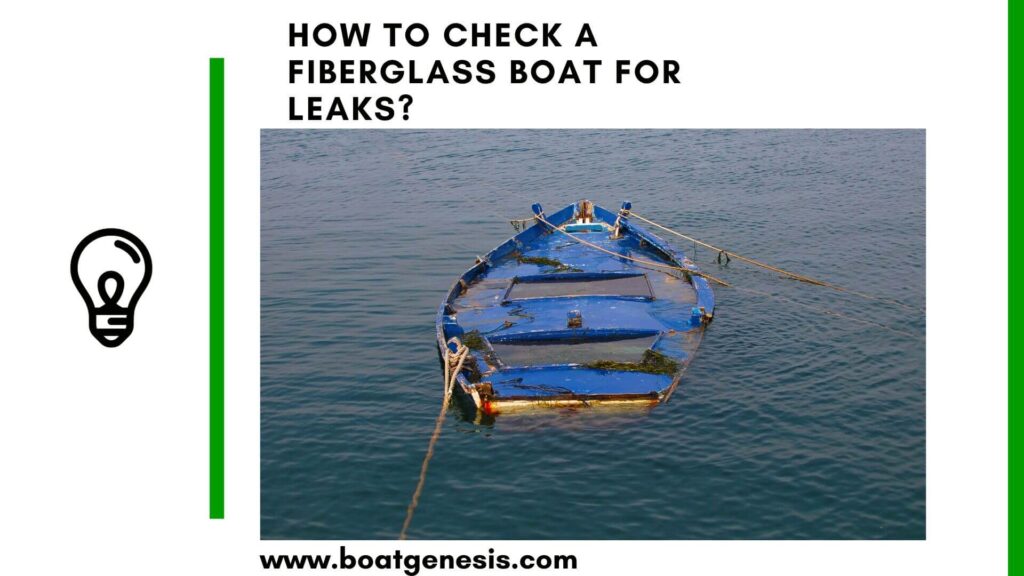This article will provide a simple, step-by-step guide to inspecting a fiberglass boat for leaks so you can identify issues before they become serious problems.
How to Check a Fiberglass Boat for Leaks?
1. Inspect the Hull Exterior
Start by visually examining the exterior of the fiberglass hull. Look for any cracks, gouges, blisters or soft spots.
Pay close attention to the keel, bow and stern areas since these receive the most wear.
Gently press on any questionable areas to check for flexing. Make note of any concave spots or moisture.
2. Check the Bilge Area
Open the motor well and inspect the bilge area. This is where water collects at the bottom of the boat.
Look for signs of standing water or dampness. Sniff for musty smells. If you do find excessive moisture, use a bilge pump to drain it and monitor if the water returns.
Consider using moisture-absorbing socks.
3. Examine Around Hardware
Carefully inspect all thru-hull fittings, cleats, rails and other mounted marine hardware. Look for cracks or signs of leakage around the bases.
Apply gentle pressure to ensure there is no movement. Rebed hardware if the sealant looks worn or you see corrosion.
4. Conduct a Leak Test
To confirm the integrity of your boat, conduct a leak test.
Securely close all hatches, windows and doors. Partially fill the boat with water using a hose or by placing it in a lake. Mark the water level and let the boat sit for several hours.
If the water level drops, you have a leak. Inspect closely to identify the source.
5. Address Any Leaks Promptly
If you do discover any leaks on your fiberglass boat, address them right away before additional damage occurs.
Thoroughly dry the area and apply the appropriate sealant recommended by your boat manufacturer. If the leaks are extensive, consider professional repair.
Staying proactive with routine inspection and maintenance is key to keeping your boat’s fiberglass hull leak-free for years of smooth sailing!
Now that you know how to check your fiberglass boat for any leaks, it’s time to repair it.
So, follow the simple steps given in my guide about fiberglass boat leak repair here.
These were my tips on how to check a fiberglass boat for leaks. Hope you’ve gained value from it.
Let me know if you have any questions.


